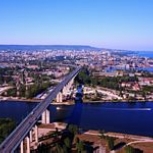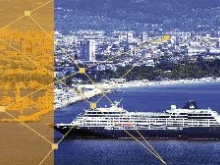
Varna
A major tourist resort on the Black Sea coast, the city of Varna is the third largest in Bulgaria, with 335,000 inhabitants. In a country where a combination of emigration and ageing are contributing to a decline in population, it is one of the few growing cities. Varna attracts young people from elsewhere in the region who come to work or to study. The city has no fewer than 35,000 students. However, as the regional economy offers relatively few jobs for the well educated, it is difficult to keep students in the region after their graduation.
Tourism has taken over from the city’s heavy industries of the communist era, which have either downsized drastically or disappeared altogether. Its beaches are popular not only with Bulgarians but also with around 2 million international visitors from neighbouring countries. One of Europe’s largest preserved Roman baths can be found in Varna, and its archaeological museum hosts the world’s oldest gold treasure trove, dating from 4600 to 4200 BC. The city has its own airport, with frequent connections to the capital Sofia and a number of international destinations. The seaport is also a stopping point for cruise ships.
Along with tourism, the city’s waterfront is also home to a sizeable maritime industry that includes cargo logistics, shipbuilding and ship repair. Manufacturing activities are mainly in purely production sites—the city has very few company headquarters. The city’s historic centre is gradually being renovated after decades of neglect, while a number of shopping malls have been built in recent years.
SOME RELATED NETWORKS
INTERACTIVE CITIES
CTUR
News


